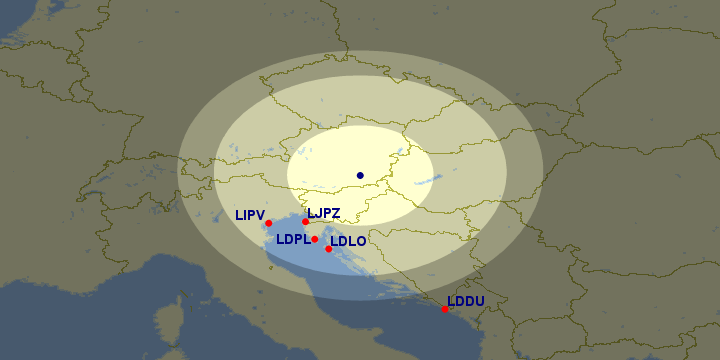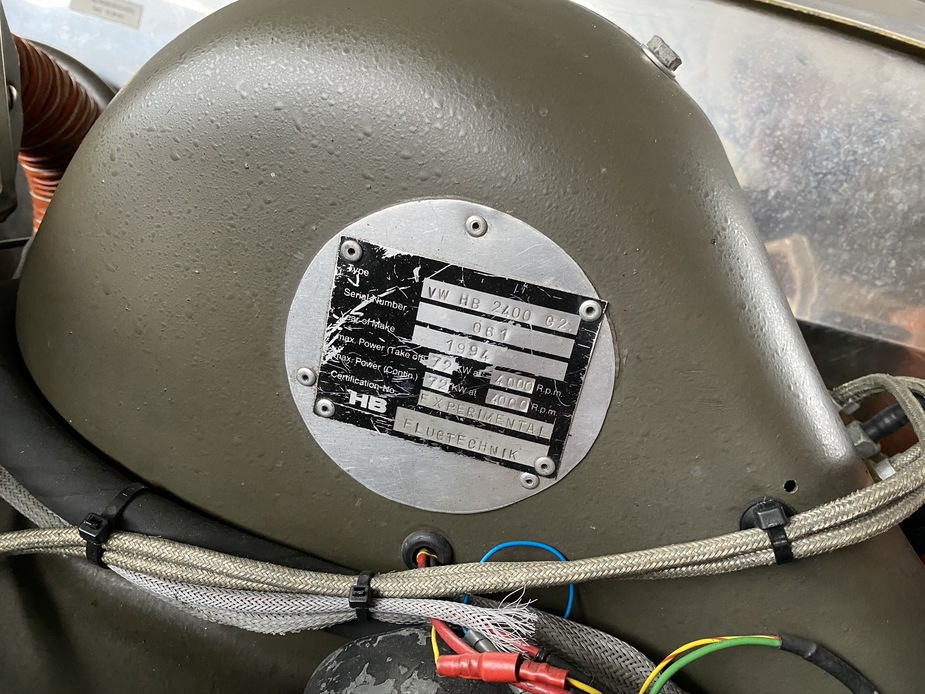The prop could be an electrically actuated lever/pushrod setup versus the MT style rotating motor.
Given 550 hrs on the engine I’d be looking into the TBO expectation and the availability of engine parts for future reference. Is there parts book data and are there people who know what to get and where to get parts? It’s apparently a 2.4 liter big bore kit on a Type 4 (? my best guess) running at up to 4000 rpm continuous. I’d also want to understand the history of this particular engine; has it been apart, if so what was done, at what hours in service and why. I have a long history of getting involved with unusual machinery and when you do, you’re generally ‘marrying’ it. Unless you’re going to sell it relatively soon, you may as well start learning the tribal knowledge now 
@silvaire
Appreciate your input, thank you. Noted all your points, very valuable to me!
Some details:
This might be a VW Type 4 based engine based on 2.4 L displacement
It is indeed 2,4L. I can’t find any details on the engine online, other than air cooled VW Porsche 2,4L Boxermotor.
The one thing I would say is true even with a proven VW conversion is the need to look at the engine periodically: valve adjustments and cylinder head retorques at 25 hrs are typical on VW conversions, and depending on the details of the propeller and hub, prop bolts may need retorquing too.
Precisely what the experienced builder pilot told me.
- valves
- belt tension and check that the prop drive is „straight“
The overall verdict of a few people in the austrian experimental scene is that HB did a good job on this plane and the design of engine/prop has been given good thought by him. Having said that, the builder I met exchanged the VW for a Rotax engine.
If you’re aiming for Lycoming-style ‘fly it and forget it’ ownership, I’d think and investigate details carefully before buying a VW conversion with reduction drive.
You mean compared to Lyco 320 or Conti 200 this plane (engine) will be more hassle/maintenance/fixing up? I’d rather not spend more on this than a certified plane, wouldn’t be worth it to me.
Some more info:
Experimental in Austria means ARC every 24 months, 50/100hr inspection can (not must) be done and released by owner, avionics can be changed easily etc..
The aim is this to be a fun flyer platform for nice weather days without going costing substantial amounts of money.
Budget is roughly/per year:
4800€ fixed costs
- insurance 350€
- arc 230€
- hangar/parking 1000
- the rest for MX
It uses around 20L Mogas per hour, so about 40€ for fuel and oil.
Useful load is
226kg
That is 2*85kg adults/170kg and full fuel 56kg (75L), so 3 hours till flame out.
Or 2,5 hours with a bit of luggage.
Range map @100kts for
-1h
-2h
- 2.5h
(apparently it does 130kts low and 115kts high, fwiw):

There appears to be a black servo connected to the prop pitch arm. I would think the black servo is electrical. I also wonder what kind of VW engine it is, a “type 1” or a “type 4” ? it could be both.
Snoopy wrote:
You mean compared to Lyco 320 or Conti 200 this plane (engine) will be more hassle/maintenance/fixing up? I’d rather not spend more on this than a certified plane, wouldn’t be worth it to me.
I think if you are asking that question in terms of time and attention, this engine is not for you. It looks very nicely built but based on experience this will be a plane needing someone who is willing to be quite involved with it. Perhaps not so much with money, but pretty certainly with time and attention.
VW-Porsche means Type 4, as used on both the VW 412 and Porsche 914 IIRC. I believe the largest VW built version was 2.0 liters which means this one was given a big bore kit for 2.4 liters and is now run at lower RPM than in the car. There is a huge culture of all this stuff that’s been ongoing since the 70s, centered around off road vehicles with aircraft versions too. You can build an engine with anywhere between 0 and 100% OEM parts, and the OEM parts can be German, Mexican, Brazilian with some variations between them. The manufacturer of this aircraft engine version made choices. Life would be easier if the company is still in existence, or some descendent exists.
Silvaire wrote:
Life would be easier if the company is still in existence, or some descendent exists.
It still is. Parts available via HB Flugtechnik.

Given 550 hrs on the engine I’d be looking into the TBO expectation and the availability of engine parts for future reference. Is there parts book data and are there people who know what to get and where to get parts? It’s apparently a 2.4 liter big bore kit on a Type 4 (? my best guess) running at up to 4000 rpm continuous. I’d also want to understand the history of this particular engine; has it been apart, if so what was done, at what hours in service and why.
Damn you’re good, all correct. 4000rpm, see plate above.
TBO according to this (pertaining to the HB-21 plane) is 1200hrs. local copy
Some sort of Engine TC is here local copy
Love the expertise here, thank you!
Silvaire wrote:
I believe the largest VW built version was 2.0 liters which means this one was given a big bore kit for 2.4 liters
Grob made a 2.5 liter direct drive on the “type 4”  Sauer even made a 2.7 liter on the “type 1”, but I think that is not the standard type 1, but a larger water cooled version VW made later, even after the type 4 went out of production. It was used on the buses. The carb configuration on the HB looks more like a type 1 than type 4 to me. A main difference is type 1 has a central inlet manifold for both cylinders, while the type 4 has two separate.
Sauer even made a 2.7 liter on the “type 1”, but I think that is not the standard type 1, but a larger water cooled version VW made later, even after the type 4 went out of production. It was used on the buses. The carb configuration on the HB looks more like a type 1 than type 4 to me. A main difference is type 1 has a central inlet manifold for both cylinders, while the type 4 has two separate.
Large displacement for a VW is why its fan cooled, or at least it helps a lot, particularly if the plane isn’t intended to be a rocket ship with minimum frontal area.
I’d probably want to call HB and ask about current parts support for the particular engine on this plane, and maybe the brakes etc. too. They have a nice website that would indicate they do anything and everything aviation related. Maybe somebody else on EuroGA would have more than my non-existent experience with HB.
I’ve had some experience with drilling down into support for older European planes and its interesting that there is often somebody, somewhere that still knows or has what you need. Sometimes it takes some time to get it though 
You want honest advice. You must have rocks in your head.
Ends